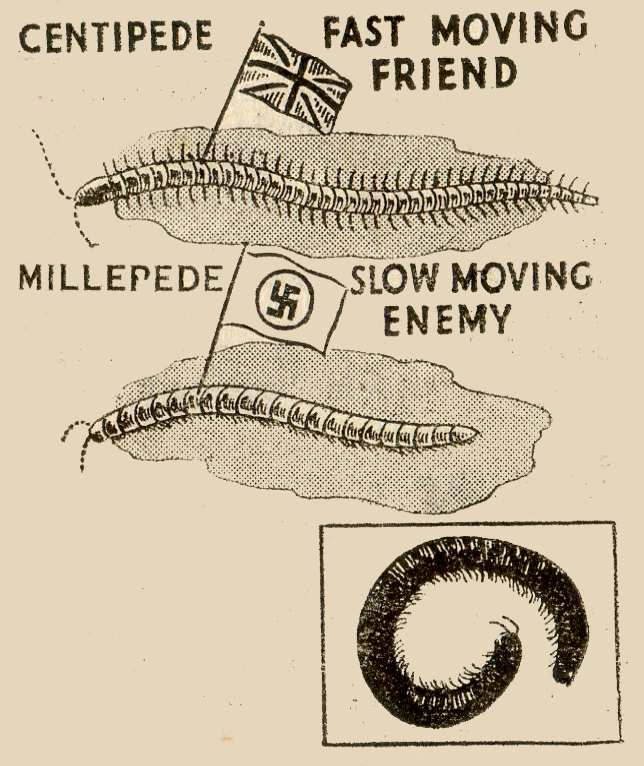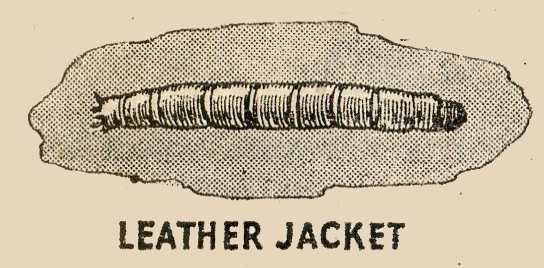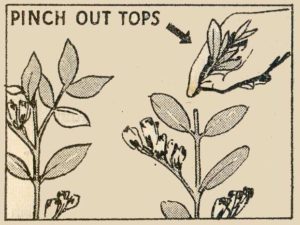
I just love the illustration with this – them dastardly millipedes, flying the swastika. No mistaking the bad guys.
But don’t mistake the centipede for a wireworm. You can tell the centipede by the number of its legs––a pair to every section of its body.
Don’t kill the centipede, for it goes for your enemies––small slugs, worms and insects. The friendly centipede moves very quickly, while the millepede––a nasty sort of chap––moves slowly, though he has got two pairs of legs to every section, as against the centipede’s one. You cannot go far wrong if you kill the slow-movers and let the fast movers live. Anyhow, it’s death to the millepede that attacks the roots of most of your plants!
 When you are getting the ground ready for planting in spring, look out for another enemy that works underground and attacks most crops––the leather jacket, the grub of the fly you call “Daddy Long Legs.” One leather jacket can do much harm to many plants like lettuce and spinach, so you must kill him wherever you find him.
When you are getting the ground ready for planting in spring, look out for another enemy that works underground and attacks most crops––the leather jacket, the grub of the fly you call “Daddy Long Legs.” One leather jacket can do much harm to many plants like lettuce and spinach, so you must kill him wherever you find him.
When the young plants begin to grow up, they meet new enemies––the chaps that do their work above ground.
 Most readers of this Guide may have suffered from black fly, especially if they have grown broad beans. These black flies harm the plant by sucking the sap and injuring the tissues; if they are allowed to go on, they will spread from the shoot to the cluster of young bean pods and spoil the whole crop.
Most readers of this Guide may have suffered from black fly, especially if they have grown broad beans. These black flies harm the plant by sucking the sap and injuring the tissues; if they are allowed to go on, they will spread from the shoot to the cluster of young bean pods and spoil the whole crop.
Now the black fly’s bitterest foe is the lady-bird, but although she makes all her meals off black or green flies, she cannot cope with all of them. The black fly usually attacks the top of the plant first, just when it is beginning to flower, so pinch off the top to check it. The lady-bird won’t mind.
But if the black fly spreads despite your efforts––and the lady-bird’s––act as advised at the end of this note, where hints are given for dealing also with slugs, caterpillars, flea beetles and the cabbage root fly. But first a word or two about these other pests that may come your way.


